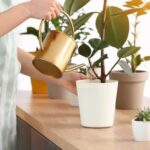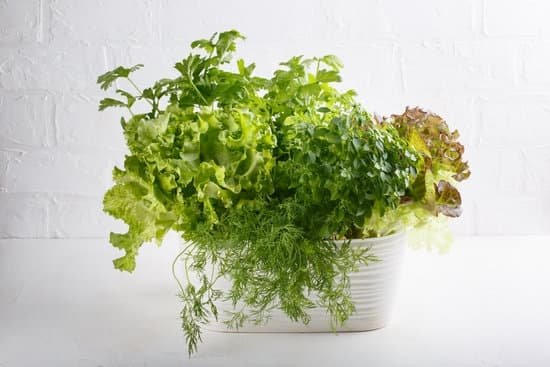Are you interested in starting a garden but don’t have the space for traditional planting beds? Look no further. In this article, we will explore the world of DIY container gardening ideas. Whether you’re a beginner or an experienced gardener, container gardening offers endless opportunities to cultivate beautiful plants in a limited space. From selecting the right containers to troubleshooting common issues, we’ve got you covered.
Container gardening has become increasingly popular for its versatility and convenience. It allows individuals with limited outdoor space or urban dwellers to enjoy the benefits of gardening. With the right containers, soil, plants, and care, you can create a bountiful garden on your balcony, patio, or even windowsill. This article will guide you through the process of setting up and maintaining your own DIY container garden.
Not only does DIY container gardening offer practical solutions for small spaces, but it also provides numerous benefits such as creating a sustainable and eco-friendly environment. Additionally, container gardens can add visual appeal to any space and provide an opportunity for self-expression through creative design. Join us as we dive into the world of DIY container gardening and unlock the secrets to a successful and thriving garden.
Selecting the Right Containers
When it comes to diy container gardening ideas, selecting the right containers is crucial for the success of your plants. The perfect pots and containers will provide adequate space for your plants to grow, as well as proper drainage and ventilation. Here are some tips for finding the perfect containers for your container garden:
1. Consider the size: Make sure to choose containers that are appropriate in size for the plants you want to grow. Larger plants will require larger pots to accommodate their root systems, while smaller plants can thrive in smaller pots.
2. Choose the right material: There are various materials to choose from when it comes to containers, including terracotta, plastic, metal, and wood. Each material has its own advantages and disadvantages, so consider factors such as durability, insulation, and weight before making a decision.
3. Look for proper drainage: Good drainage is essential for healthy container plants, so look for containers with drainage holes at the bottom to allow excess water to escape. If your chosen container does not have drainage holes, you can drill them yourself or use a layer of gravel at the bottom to prevent waterlogging.
4. Consider aesthetics: While functionality is important, don’t forget about the visual appeal of your containers. Choose pots and containers that complement the overall look of your garden and enhance its beauty.
By following these tips, you can ensure that you select the right containers for your diy container gardening project, setting yourself up for a successful and thriving garden.
Choosing the Right Plants
When it comes to choosing the right plants for your diy container gardening project, there are a few important factors to consider. First, think about the environment in which your containers will be placed. Is it a sunny spot, or does it receive more shade? This will help you determine which plants will thrive in that specific area. Additionally, consider the size of your containers and how much space the plants will need to grow.
Another important consideration when selecting plants for container gardening is the climate in which you live. Different plants have different temperature and humidity requirements, so be sure to choose ones that are well-suited for your local climate. If you’re new to gardening, it’s also a good idea to start with low-maintenance plants that don’t require a lot of attention.
Some popular choices for diy container gardening include herbs like basil, parsley, and mint, as well as vegetables such as tomatoes, peppers, and lettuce. Flowers like petunias, geraniums, and marigolds also do well in containers. Before purchasing any plants, it’s a good idea to research their specific needs and make sure they are suitable for container growing.
In addition to selecting the right types of plants for your diy container garden, it’s also important to consider their growth habits. Some plants may get too large for their containers or have aggressive root systems that can overtake other plants.
Be sure to choose varieties that will remain an appropriate size for your containers and won’t cause any issues with neighboring plants. By taking all of these factors into consideration, you can create a beautiful and thriving diy container garden filled with the perfect selection of plants.
Soil and Fertilizer
When it comes to successful DIY container gardening, the right soil and fertilizer are essential components. The type of soil you use can make a significant difference in the health and growth of your plants.
For container gardening, it’s important to choose a high-quality potting mix that is lightweight, well-draining, and rich in nutrients. Avoid using garden soil, as it tends to be too heavy and may not provide the proper aeration and drainage that container plants need.
In addition to selecting the right soil, choosing the best fertilizer for your container garden is crucial for promoting healthy plant growth. Since container plants have limited access to nutrients in the surrounding environment, it’s important to supplement their diet with a balanced fertilizer.
Look for a fertilizer specifically formulated for container plants, which will typically be higher in essential nutrients like nitrogen, phosphorus, and potassium. Consider using slow-release granular fertilizers or liquid fertilizers that can be easily incorporated into your watering routine.
It’s also important to regularly monitor your plants for any signs of nutrient deficiency or over-fertilization. Adjusting your fertilizing schedule based on the specific needs of your container plants can help you achieve optimal results. By being mindful of the soil and fertilizer needs of your container garden, you can set yourself up for success and enjoy healthy, vibrant plants all season long.
| Soil Type | Best Fertilizer |
|---|---|
| Lightweight potting mix | Fertilizer specifically formulated for container plants |
| Avoid garden soil | Consider slow-release granular fertilizers or liquid fertilizers |
Watering and Maintenance
Understanding the Watering Needs of Your Plants
One of the most important aspects of maintaining a thriving container garden is understanding the watering needs of your plants. Different plants have different requirements when it comes to water, so it’s essential to do your research and understand how much water each type of plant needs. Generally, most container plants will need to be watered regularly, especially during hot and dry weather.
Choosing the Right Watering Technique
When it comes to watering your container garden, there are several techniques you can use. Many gardeners opt for traditional watering cans, while others prefer using a hose with a gentle spray attachment. Alternatively, self-watering containers are a popular choice for those who want a low-maintenance option. It’s crucial to choose a watering technique that works best for your specific plants and containers.
Weeding and Pruning
In addition to watering, maintaining your container garden also involves regular weeding and pruning. Weeds can quickly take over a small container, so it’s important to keep an eye on any unwanted growth and remove it promptly. Likewise, pruning is essential for promoting healthy growth and preventing over-crowding within the containers.
Fertilizing Your Plants
Another important aspect of maintenance is fertilizing your plants. While good soil preparation can provide nutrients initially, regular fertilization will help ensure that your plants continue to thrive throughout the growing season. Be sure to select a fertilizer that is suitable for the specific types of plants in your containers and follow the recommended application guidelines.
By properly addressing watering needs and consistently maintaining your container garden through weeding, pruning, and fertilizing, you’ll be well on your way to enjoying a successful and vibrant diy container garden full of beautiful blooms or delicious produce.
Creative DIY Container Ideas
Container gardening doesn’t have to be limited to traditional pots and planters. In fact, there are numerous creative DIY container gardening ideas that can add an extra element of uniqueness and charm to your garden. One popular idea is to repurpose old items as containers for your plants. Not only does this add a unique aesthetic to your garden, but it also promotes sustainability by giving new life to old items that might otherwise end up in the landfill.
Some creative DIY container gardening ideas include using old wooden crates, wine barrels, mason jars, tin cans, or even old wheelbarrows as planters. These unconventional containers can add a touch of rustic charm or a quirky vibe to your garden, depending on your personal style. Additionally, repurposing these items as planters can be a great way to save money on expensive store-bought pots and containers.
Another unique DIY container gardening idea is to create a vertical garden using items such as hanging shoe organizers, pallets, or even gutters. Vertical gardening not only maximizes space in small areas but also creates a visually stunning display of plants cascading down the sides of the containers. This is an excellent option for those with limited outdoor space or for adding greenery to walls and fences.
In addition to being budget-friendly and sustainable, getting creative with DIY container gardening ideas allows you to put your own personal stamp on your garden. Whether you prefer a more eclectic and bohemian feel or a sleek and modern look, there are endless possibilities for repurposing containers for gardening in a way that reflects your individual style and personality.
| DIY Container Gardening Idea | Description |
|---|---|
| Repurposed Wooden Crates | Old wooden crates can be used as unique planters and add a rustic touch to your garden. |
| Vertical Garden Using Shoe Organizers | Hanging shoe organizers can be filled with soil and plants, creating a space-saving vertical garden. |
| Upcycled Mason Jars | Mason jars make charming planters for small herbs or succulents. |
Vertical Gardening
When space is limited, vertical gardening is the perfect solution for maximizing your gardening area. Not only does it allow you to grow more plants in a small space, but it also adds an aesthetic element to your garden. Here are some creative ideas for creating a vertical container garden:
- Hanging Baskets: Utilize hanging baskets to grow trailing plants such as cherry tomatoes, strawberries, and herbs. Hang them from a trellis, porch, or balcony railing to make the most of your vertical space.
- Wall-Mounted Planters: Attach wall-mounted planters to fences or walls to add greenery to your outdoor living spaces. These planters are ideal for growing flowers, succulents, or small herbs.
- Tiered Shelving Units: Consider using tiered shelving units or ladder-style plant stands for displaying potted plants at varying heights. This not only creates visual interest but also provides ample space for growing different types of plants.
- Trellises and Arbors: For climbing vegetables like peas, cucumbers, and beans, install trellises or arbors in your garden. These structures provide support for the plants while adding height and dimension to your outdoor space.
By implementing these creative DIY container gardening ideas, you can transform any small or limited gardening area into a lush and productive vertical garden. With careful planning and strategic placement of containers, you can enjoy an abundance of fresh produce and colorful blooms in even the smallest of spaces.
Troubleshooting Common Issues
Preventing Overwatering
One common issue in diy container gardening is overwatering. It can lead to root rot and other diseases that can harm the plants. To prevent overwatering, it’s important to choose containers with proper drainage holes.
Additionally, using a well-draining soil mix and checking the soil moisture regularly can also help avoid overwatering. Another tip is to water the plants at the base of the plant rather than from above, as this can prevent excess water from accumulating on the leaves and stems.
Dealing With Pests
Pests such as aphids, mites, and caterpillars can wreak havoc on a container garden. To address this issue, consider using natural pest control methods such as neem oil or insecticidal soap. Regularly inspecting the plants for signs of pests and taking prompt action when they’re detected can help prevent an infestation from spiraling out of control.
Managing Nutrient Deficiencies
Another common problem in diy container gardening is nutrient deficiencies in the soil, which can result in stunted growth or yellowing leaves. Choosing a high-quality fertilizer specifically formulated for container plants can help address nutrient deficiencies. In addition, regularly monitoring the plant’s growth and appearance can help identify potential nutrient deficiencies early on so that corrective action can be taken promptly.
Final Thoughts
In conclusion, diy container gardening is a great way to experience the joys of gardening even with limited space. By utilizing the right containers, selecting the appropriate plants, preparing the soil and providing proper maintenance, anyone can create a beautiful and thriving container garden. Whether you have a small balcony, patio, or even just a window sill, there are endless possibilities for creating a lush and vibrant container garden.
One of the most exciting aspects of diy container gardening is the opportunity to get creative with your planters. From repurposing old buckets and crates to crafting unique hanging gardens, there are countless inventive ideas to explore. Making use of vertical space through trellises and wall-mounted planters can also maximize your planting area while adding an eye-catching dimension to your outdoor or indoor decor.
As you embark on your journey into diy container gardening, remember that like any form of gardening, it takes time and patience to develop your green thumb. Don’t be discouraged by setbacks or common issues that may arise – troubleshooting is all part of the learning process.
With dedication and care, you’ll soon find yourself reaping the rewards of a flourishing container garden filled with beauty and life. So gather your favorite diy container gardening ideas and get ready to enjoy the therapeutic benefits and sense of accomplishment that comes with nurturing your own little green oasis.

Welcome to my gardening blog! I am passionate about plants and enjoy sharing my knowledge and experiences with others. In this blog, I will write about everything related to gardening, from tips on how to get started to updates on my own garden projects.





